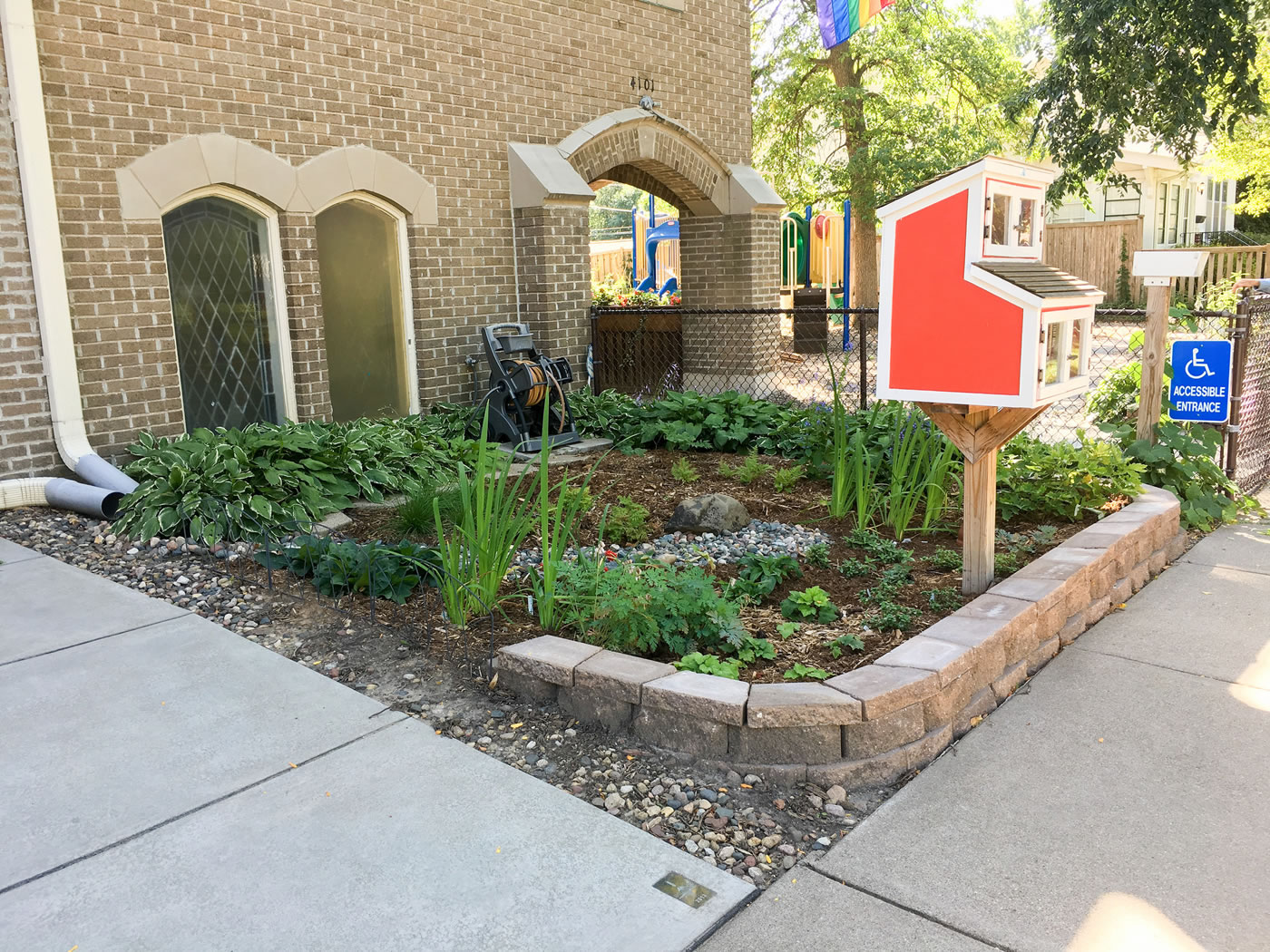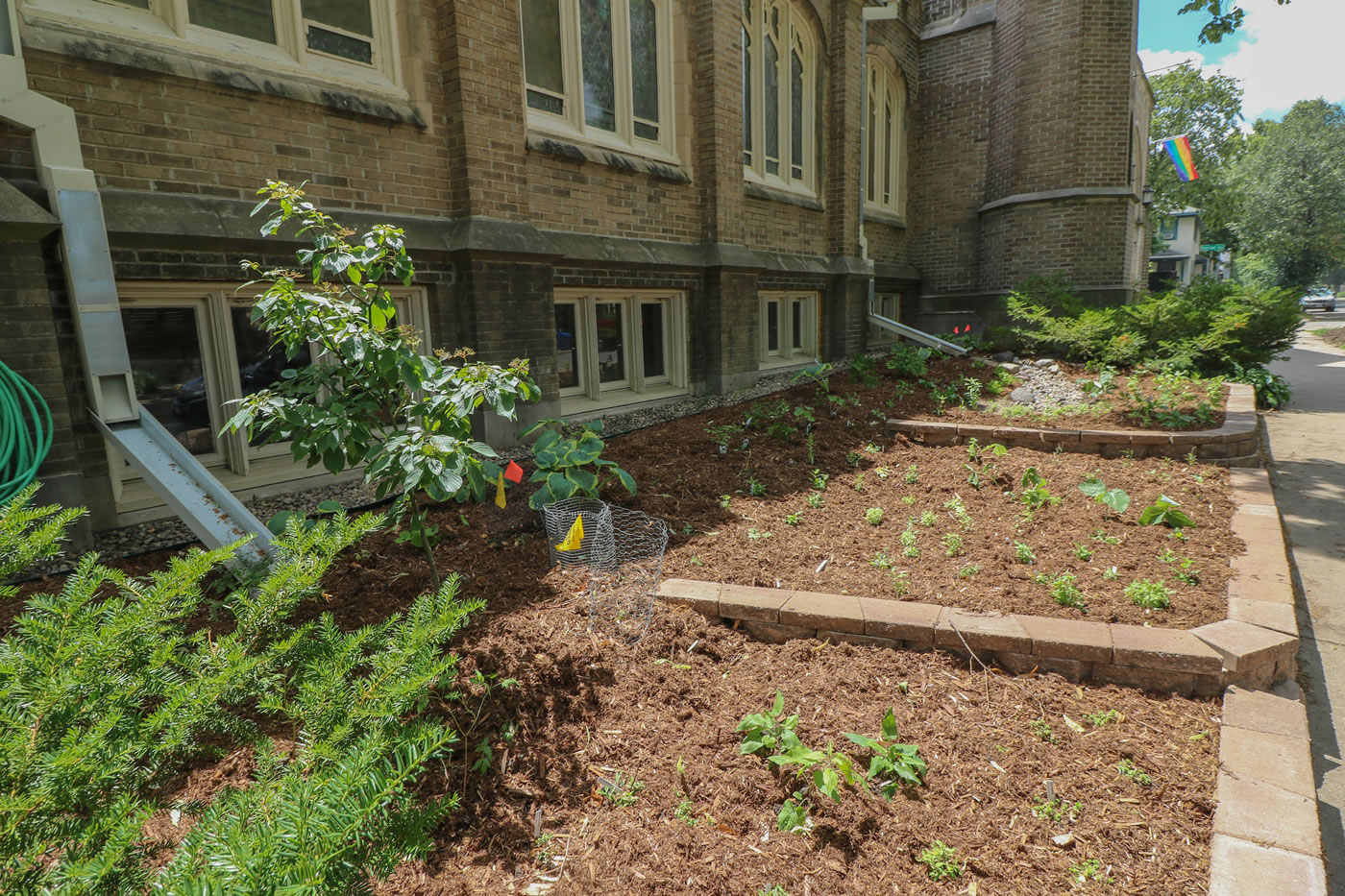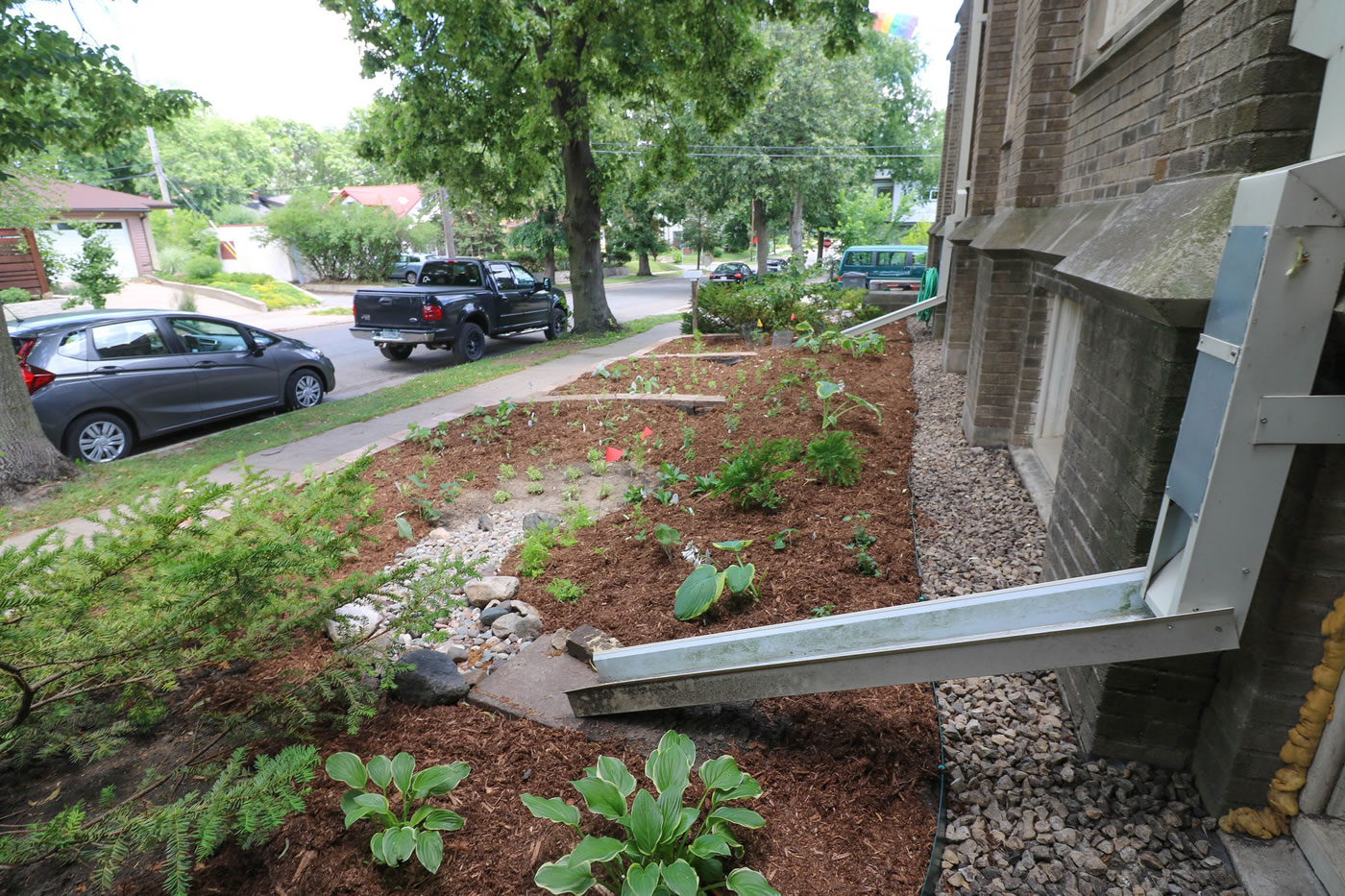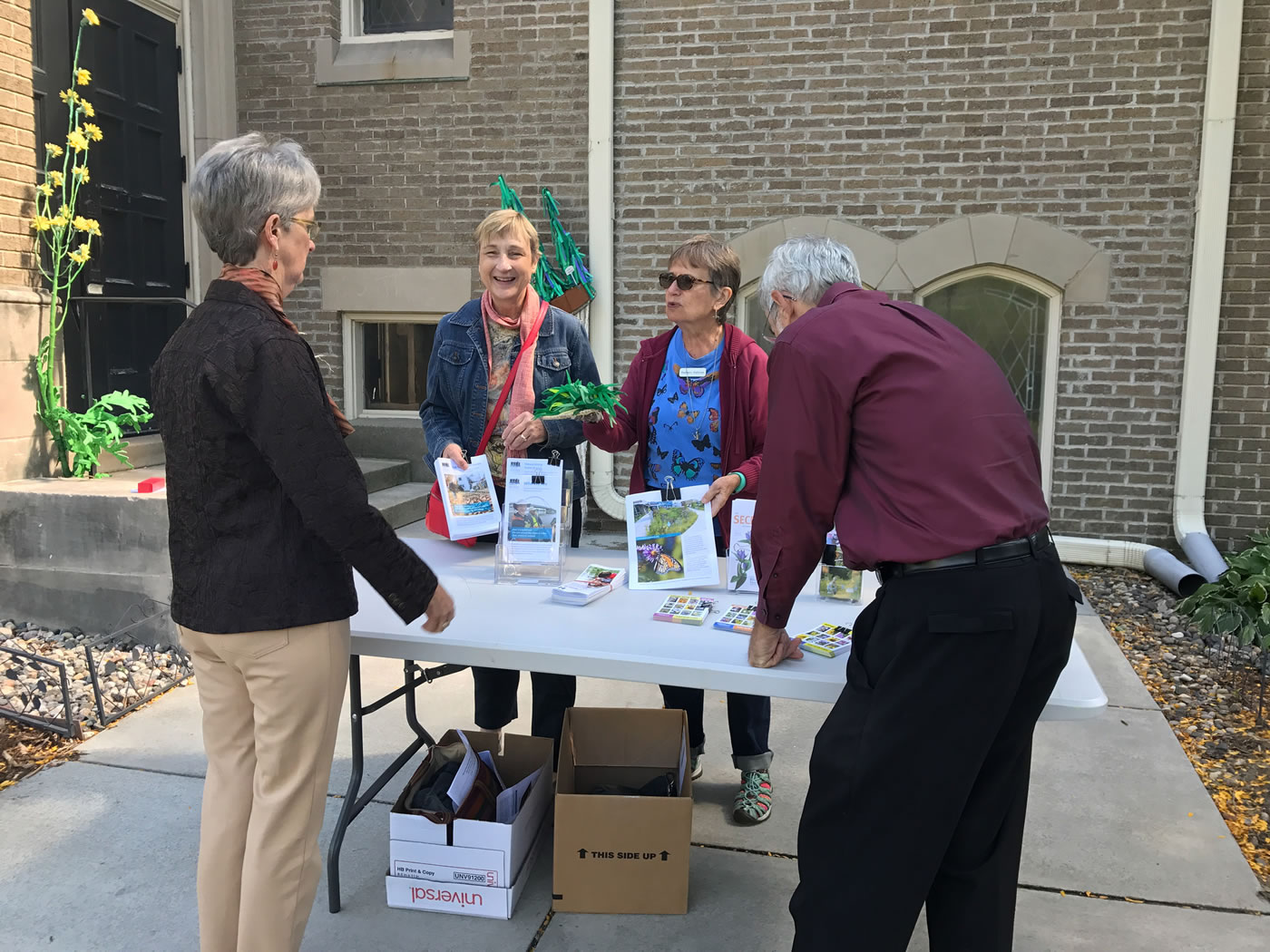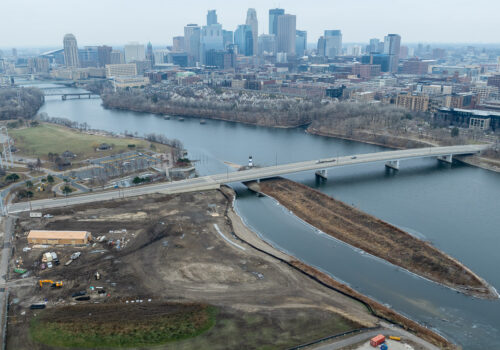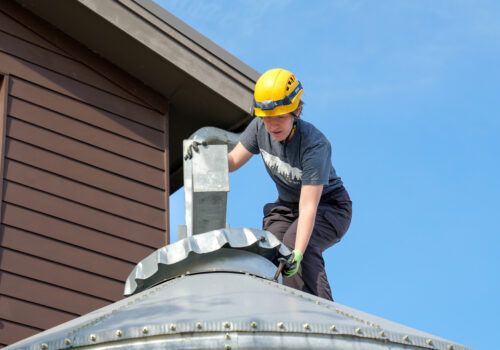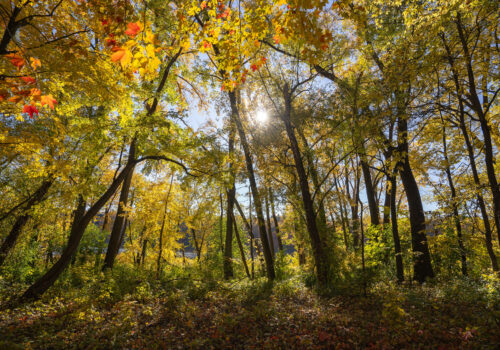News / October 25, 2017
Church’s rain garden project empowers and educates all ages
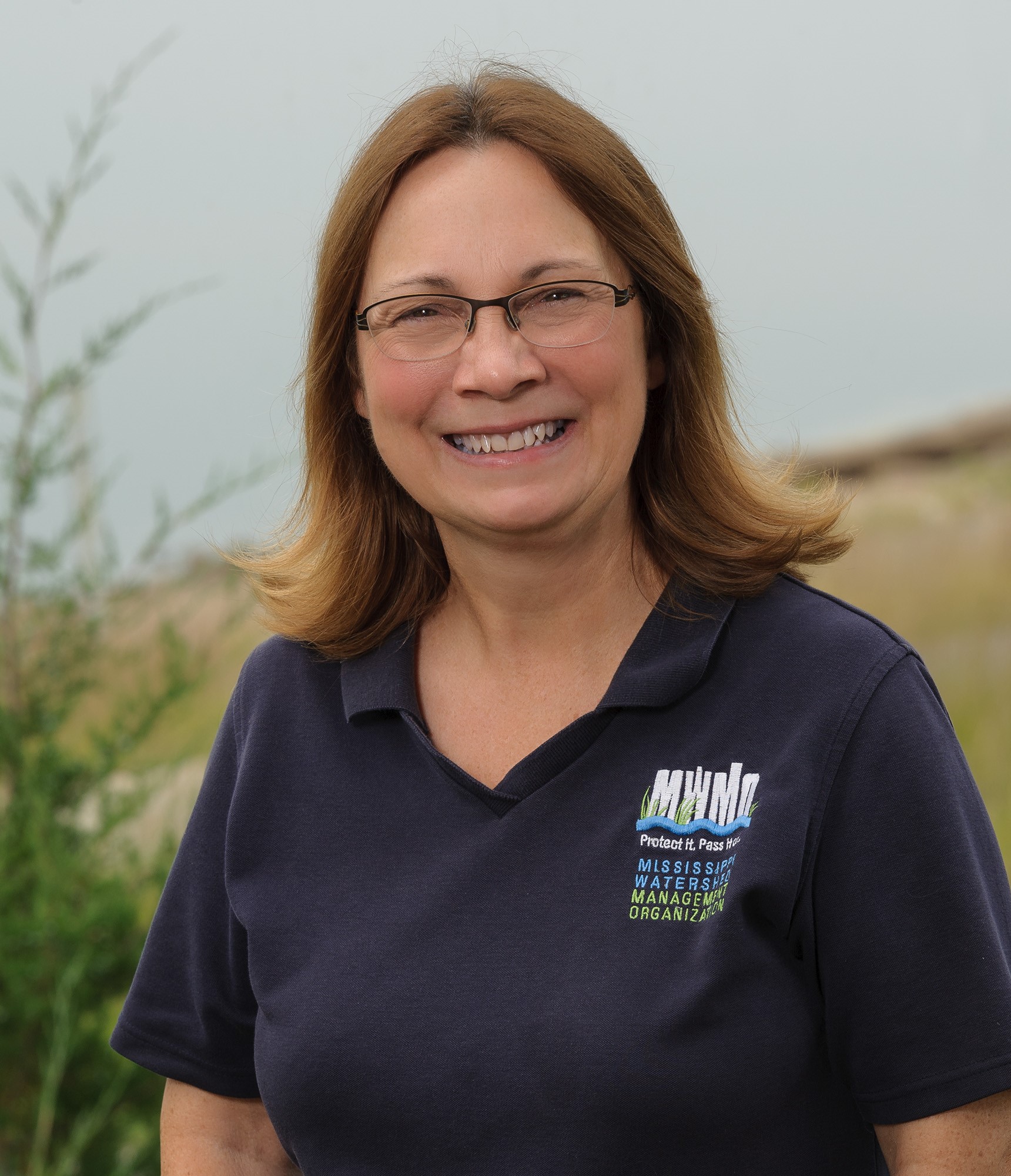

Judson Memorial Baptist Church, a congregation on the southwest side of the MWMO watershed, recently installed three rain gardens — and started growing water stewards of all ages in the process. Native plants in these gardens are filtering stormwater from the church’s large rooftop to prevent polluted runoff from entering local storm drains. Meanwhile, church visitors and passers-by are learning how they can protect water quality in the Mississippi River, too.
Jane Jacobson, a life-long church parishioner and professional landscape designer, realized the church could potentially resolve some icy sidewalk issues while simultaneously creating other benefits for the community. By reusing stormwater from the church’s rooftops to water gardens on the property, they could prevent this runoff (and pollutants it would pick up) from flowing across their sidewalks and into storm drains to the Mississippi River. Because the church is located in a quiet residential area, the project could also teach local homeowners how they can take similar actions on their own properties. Youngsters in the on-site Judson Preschool could also learn how soils and plants can protect water and help bees, butterflies and birds.
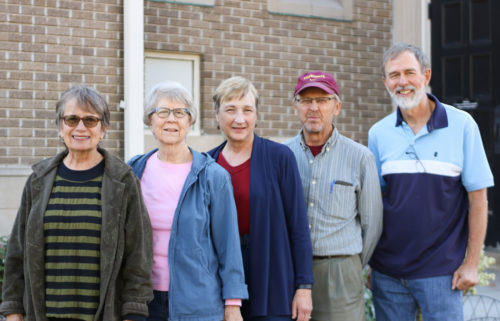
After receiving an MWMO Mini Grant to fund some construction and educational materials, a team of volunteers — many of whom were of retirement age — spent more than 100 hours testing soils, digging out old tree roots, preparing the ground for planting, installing plants, and building retaining walls. Through their efforts, rain gardens were added on the north, northwest and west sides of the building. The rain garden on the west side sits adjacent to the church’s Little Free Library and Judson Preschool Outdoor Classroom. Each garden is absorbing runoff from a different portion of the church’s roof.
Jacobson and other volunteers chose to install native plants in the gardens for their long and abundant root systems, which allow them to soak up more stormwater than other plant species. Many of these flowers and grasses also attract native bees, butterflies and birds, creating a more robust ecosystem and providing food for pollinators (which play a critical role in our food chain). Some native flower species chosen for the church’s gardens include asters, wild blue phlox, white bleeding heart, maiden ferns, great blue lobelia, and cardinal flowers.
The garden installations drew people in even before the project was completed. In spite of her nearly 85 years of gardening, one volunteer learned about rain gardens for the first time during the project. She was able to share information about their benefit with her adult son. Preschoolers watching the planting asked questions like, “What is a rain garden?” Barbara Balcom, one of the project volunteers, explained that water coming off the roof, through the downspouts, would now be captured by the gardens instead of running off into the streets. As the children looked up at the roof and pondered the situation, one boy realized another bonus to capturing the runoff and exclaimed, “Yeah, all that water would make the cars slip!”
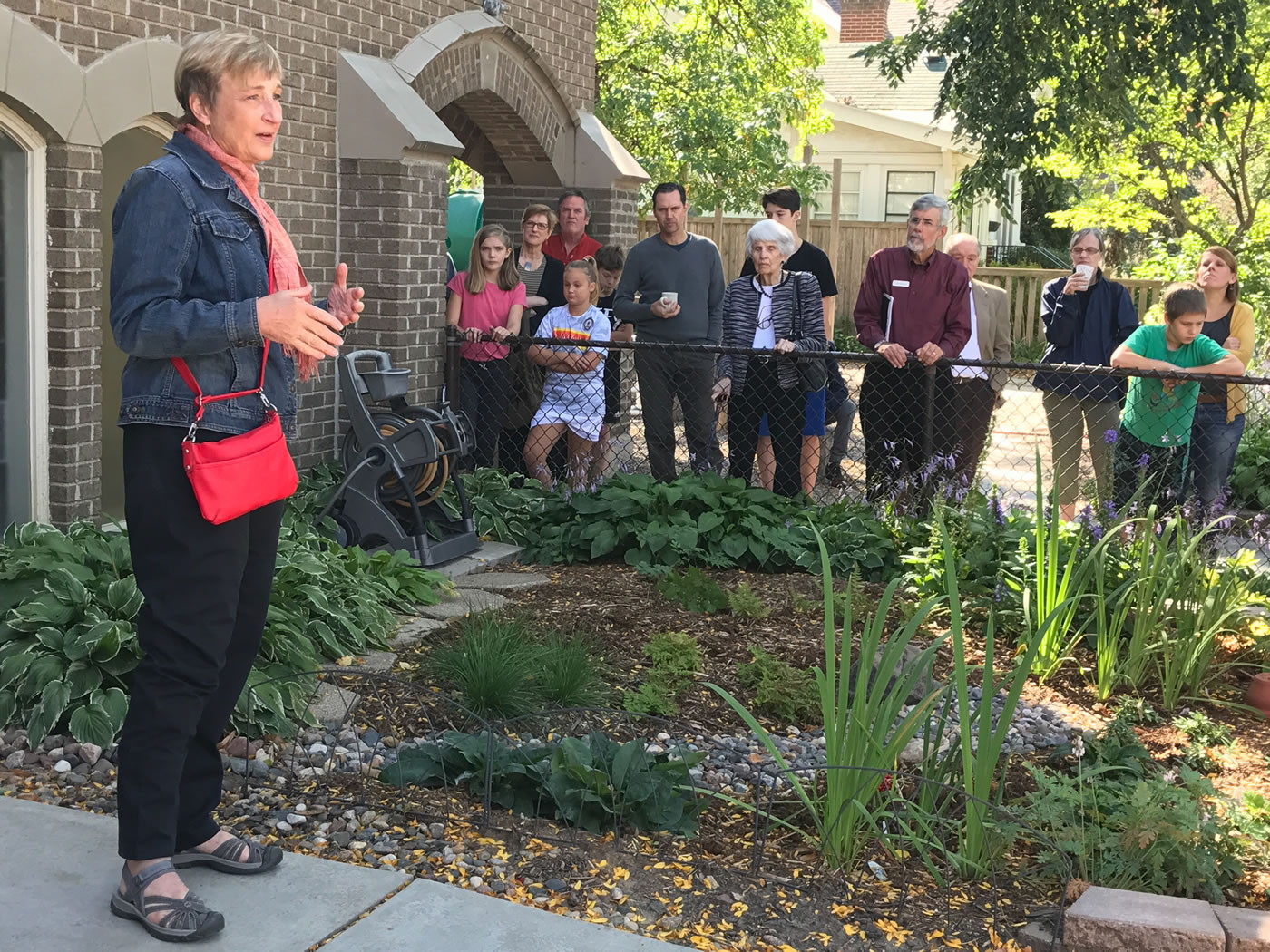
The gardens were introduced to the congregation and the public was invited to a reception on Sunday, September 17. Visitors learned about rain gardens, native plants and other actions they could take in their yards to prevent water pollution, such as raking up leaves to prevent them from blowing into storm drains (where they flow to water bodies and create algae).
During the events, participants were shown a model native plant with roots that stretched more than 8 feet long. According to Balcom, “People were quite impressed to see the size of these mysterious roots!” Jacobson demonstrated how water flows over different surfaces. First water was poured over the hard (impervious) sidewalk, where it ran towards the street. Next, a bucket of water was poured into one of the rain gardens, and the crowd watched as it quickly soaked into the pervious soil, filtering through the flowers’ roots. People at the event also added water from Minnehaha Creek and small rocks to make a personal connection with the gardens.
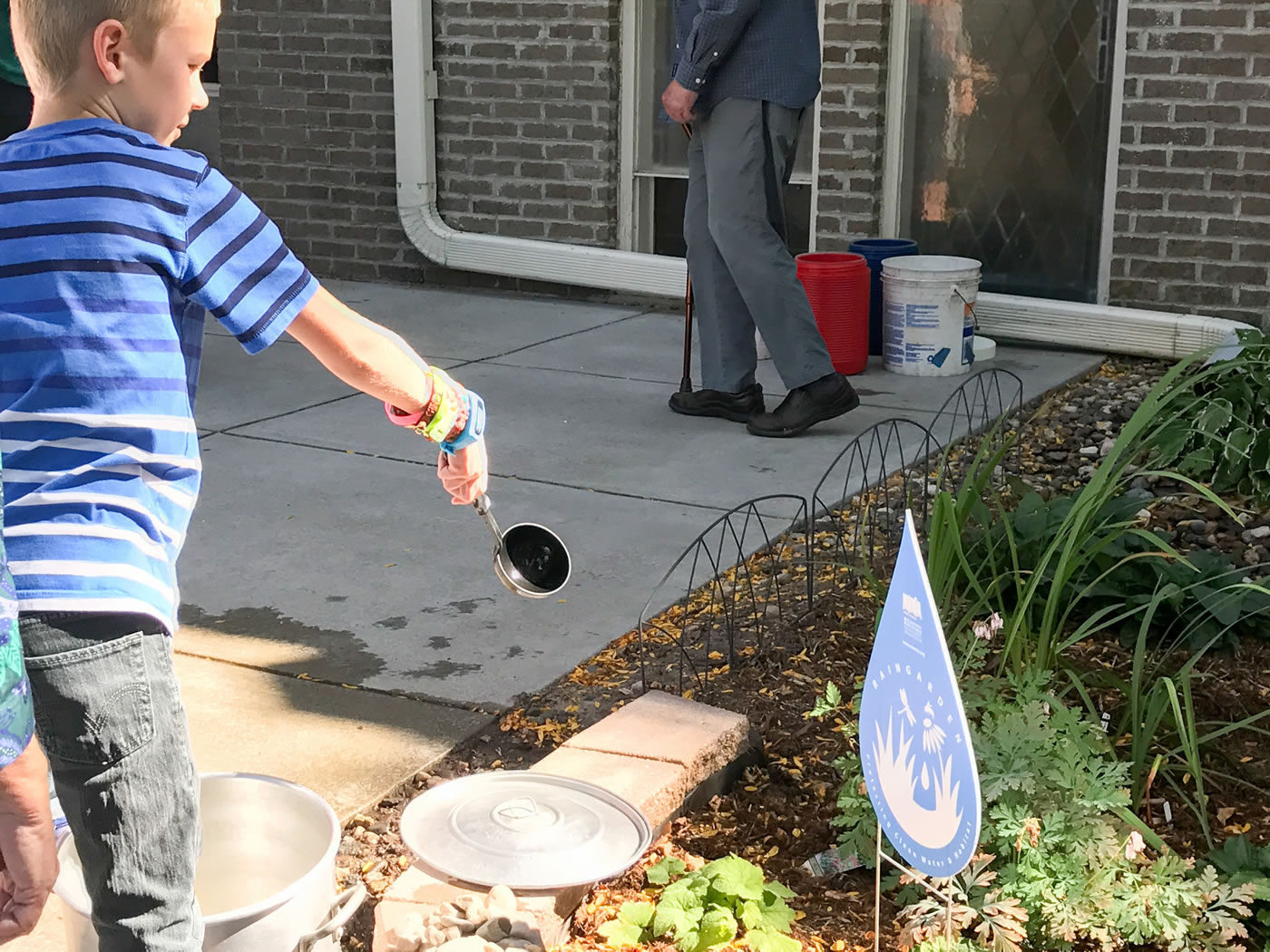
As part of the long-term education goals for the project, children in the Judson Preschool are learning how rain gardens work, why they are important and why they include native plants. The children have Friday science lessons related to the gardens, and one parent brought each child a native plant they could take home to make a difference in their own yards.
The church is now interested in other actions they can take to protect water quality. They are exploring the option to plant hardier, native grasses in a section of the church’s boulevard where there is heavy foot traffic and stormwater runoff. Project team members are also committed to using this project to develop more water stewards in their neighborhood.
Like members of Judson Memorial Baptist Church, you can learn more about rain gardens, how to design native plantings that suit your property, and other steps you can take to protect water quality in our shared Mississippi River.
More Resources
Judson Memorial Baptist Church
